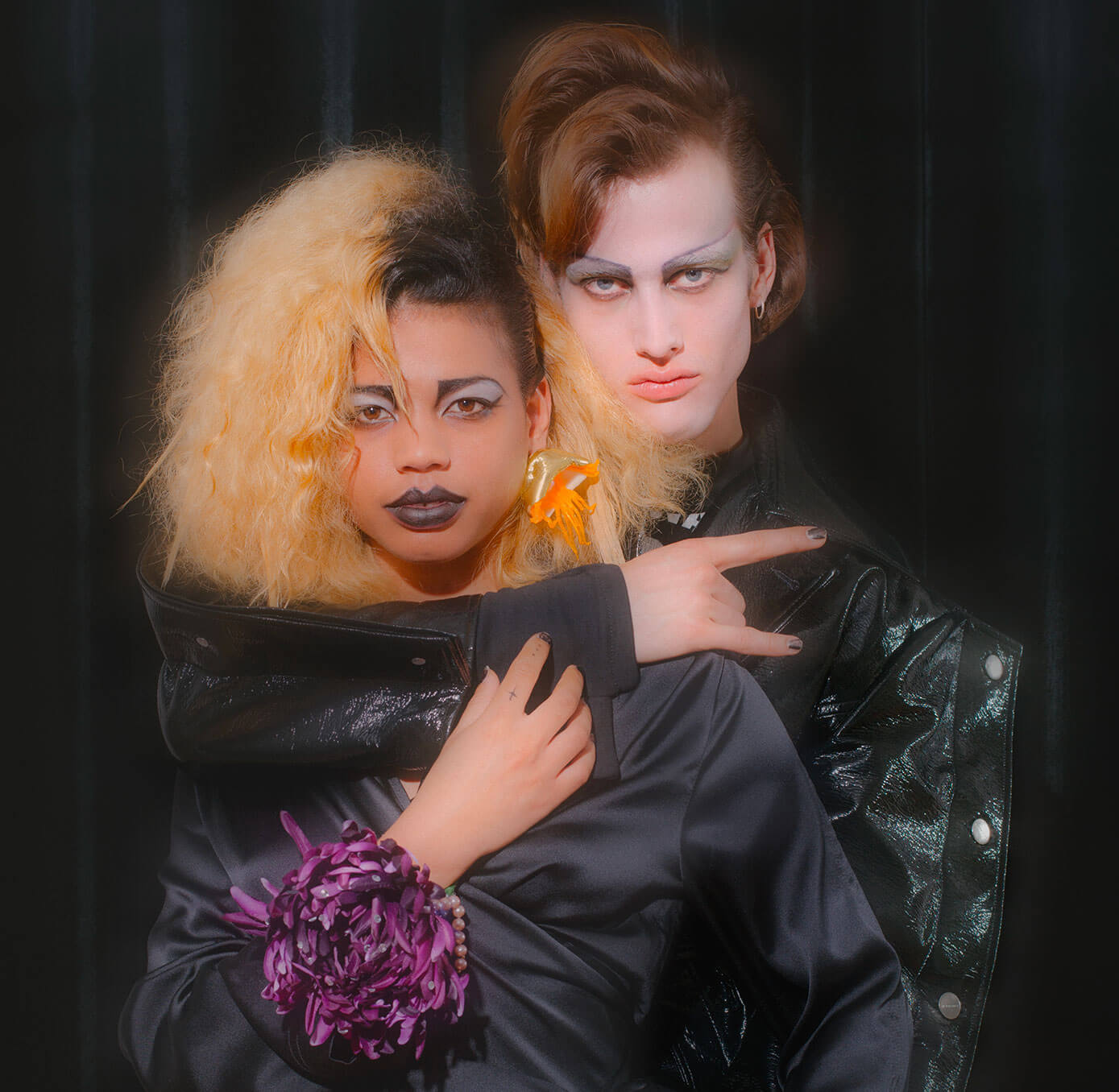Ugly-Pretty
Up-and-coming fashion label Neith Nyer, founded by Brazilian designer Francisco Terra and based in Paris, offers a refreshing new vision of womenswear that’s as glamorous as it is “ugly-pretty”.

Neith Nyer FW19 photo by @johannes_erb_
The hunt for new ways to transform the common into the sublime is as old as alchemy. It’s a desire that runs through the ages of Pop Art and postmodernism, right up to the work of Mr Francisco Terra, the Brazilian mastermind behind the irony-saturated glam-romp that is Neith Nyer.
Mr Terra chanced into fashion: a romance in his twenties brought him to France where he started his house—which is named after his grandmother, who bought him his first Singer sewing machine and taught him the basics of garment construction. “I have been in a relationship with a Parisian for 11 years and this city became my home. Creating in Paris is so special because of the inspiration sources the city has to offer you; it is very rich culturally and that is priceless.”
Terra is a finalist for the 2018 iteration of the prestigious Paris-based ANDAM award for breakthrough fashion (previous laureates include Martin Margiela, Christophe Lemaire, Viktor & Rolf, and more recently launched fashion sensations such as Atlein, Y/Project and Saint Laurent’s Anthony Vaccarello). Unlike many of the other “young designer” awards that clutter the fashion calendar (usually mere promotional events in disguise as luxury’s own version of “corporate social responsibility”), the careers of ANDAM laureates are closely scrutinized as just being selected as a finalist is a great honour and validation of design brilliance.
In creative terms, Neith Nyer is nourished by the fantasies of the young Mr Terra, who devoured glossy magazines (of every extraction, from Rio teen rags to Paris Couture bibles). Is there any taste he finds too base or nauseating to be elevated? “No, I believe there is beauty in everything, one just needs to take the time to observe carefully. Afterall, taste is also something private, especially when it comes to fashion. That also makes me believe that there is a place for everyone in this industry and it is time to care more about what you’re doing than it is to just spend your life criticizing others. It leaves little place for concrete arguments.”
Some of Terra’s work is described as gender-fluid or “ungendered.” Does that require a different creative approach? “Not for me. I believe people are the way they want to be, naturally, so the process of creating the garments, the casting and, finally, fitting the models is very organic. Many times we also leave the place for the model to show us how comfortable they are in the look. You can see it in their eyes, in the way they look at themselves in the mirror. It is a very organic process.”
Mr Terra is a young designer on the cusp of greatness. He runs a small atelier in the north of Paris where he employs a handful of assistants. Asked if he had any advice for ambitious young things seeking to carve out a place for themselves in the unforgiving world of European high fashion, Terra replied, simply: “Be yourself, always, and stay true to your roots because they will define whether your work will show sincerity or not. And a brand that shows with honesty and love has an extra point for success.” And the most unpleasant part of working in the fashion industry? “The fact that your connections matter more than your work…”
A Neith Nyer collection pulses with so many influences and references, both personal and temporal, that it is impossible for the critical observer to pick them all apart and identify them. Indeed, Terra doesn’t seem to cling to any of the usual sources of fashion inspiration (decades, films, actresses, etc.). All of his work seems utterly unique and self-referential. “I start a collection through my personal diaries: I revisit a lot of family photo albums, I record a lot on my trips especially in Japan and—most importantly—I constantly observe the people around me.”
Terra’s taste is omnivorous. Past collections are just as likely to include pulse-quickening nudity viewed through sheer panels and flashes of toplessness as they are to embrace a certain gawky dowdiness: something akin to what the French call “jolie-laide” or pretty-ugly. One finds a flash of bedazzled bodice or some hooker-ish leather fringe alongside other looks that read as rigorously nerdy and aloof. But what every collection has in common is Mr Terra’s riotous and jubilant maximalism, composed of visual elements drawn from all aesthetic registers, from Old Hollywood to Paris Couture to the shantytown red-light haunts of the developing world.
Terra used to work for the United Nations. Did his work there influence his sensibility at all? “I was working on the ITC, International Trade Centre, on the Services Market session and specifically with projects turned to the development of the fashion industry in the 12 francophone countries of Africa. For example: textile development. Being there opened my mind to several other possibilities that fashion can bring, and to the fact that that there is indeed creative life outside of the major fashion capitals and the small privileged world we live in.”
Outside of Paris, Mr Terra feels most comfortable in Tokyo, “because I grew up reading a lot of mangas and I had a lot of Japanese friends. I go often to Japan and I feel very comfortable there. It’s almost like a second home. Every collection has a bit of Japan in it.”
Every collection seems to have a bit of everything in it. Mr Terra’s work has that characteristic shared by all profound visual culture: it asks as many questions as it answers.